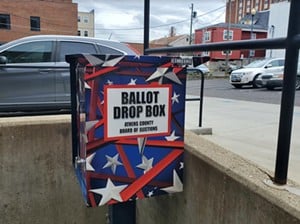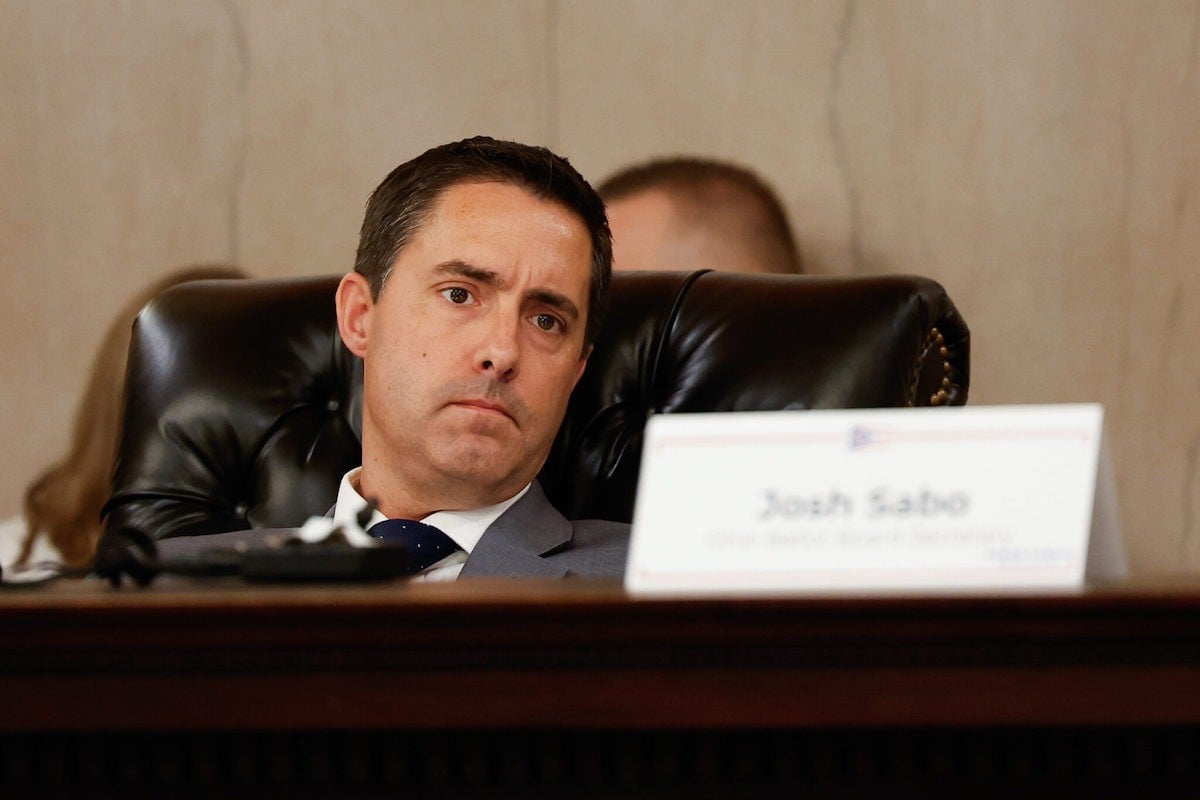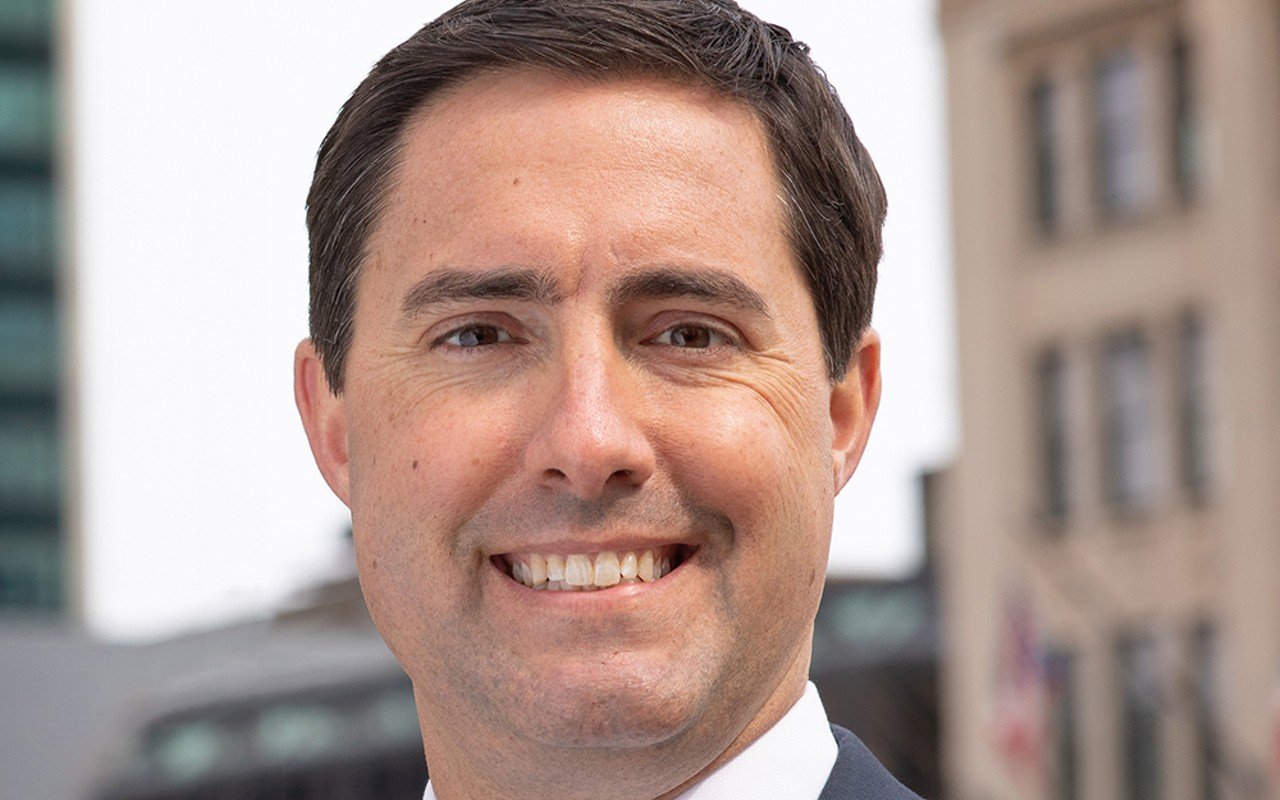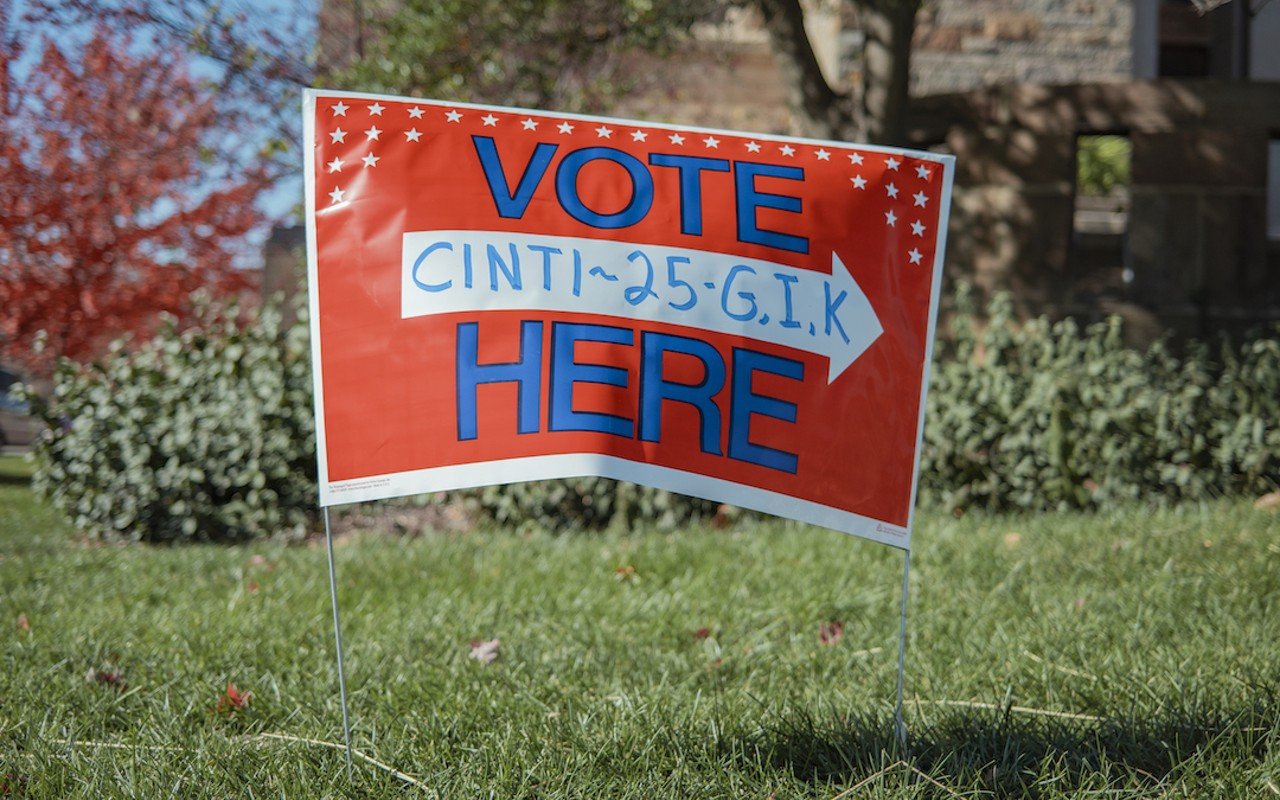Secretary of State Frank LaRose is fond of saying that “it’s easy to vote and hard to cheat” in Ohio elections. But his recent — and not-so-recent — conduct seems to contradict both halves of that formulation, a watchdog says.
Just two months before a presidential election, the state’s top elections officer continues to change the rules in ways that make it more difficult for some Ohioans to vote — particularly new citizens and the disabled. Meanwhile, he’s supposed to conduct elections neutrally, but the things he’s done concerning the state’s extreme partisan gerrymandering are clearly biased in favor of his own party and his friends, a watchdog said.
LaRose on Friday issued an order that effectively banned any of the already-limited set of people who can deliver a disabled person’s ballot to a drop box from doing so. He now requires people providing assistance to go to the board of elections during hours when it’s open and sign an attestation that they’re dropping off a ballot.
LaRose also sent a letter to legislative leaders urging them to eliminate drop boxes altogether. He said it was to prevent a practice known as “ballot harvesting” — or when a person delivers ballots on behalf of others.
LaRose and some other Republicans have claimed without evidence that it’s vulnerable to widespread fraud. A Reuters fact check of the 2022 election found no such evidence, despite the claims that have been made about it.
The secretary of state, whose office didn’t respond to questions, also claims without evidence that noncitizen voting is a big concern, and he recently completed an audit that flagged possible noncitizen voting. The Ohio Capital Journal on Wednesday reported that at least two new citizens who were flagged were later sent letters making it sound as if the state’s strict voter ID law was more strict than it actually is.
LaRose has also conducted aggressive purges of the voter rolls that critics say disproportionately affect communities of color.
The secretary of state has made much of potential fraud through ballot harvesting, noncitizen voting, and other means, but he’s never shown any evidence that it isn’t exceedingly rare, as independent experts say. Indeed, despite his protestations and investigations, LaRose’s hundreds of referrals for suspected voter fraud as of last year had resulted in just one criminal charge. That was after four years of running elections in a state with 8 million registered voters.
To justify the elimination of drop boxes, LaRose — again without evidence — accused the League of Women Voters of trying to make it easy for people to cheat in Ohio elections.
The 104-year-old, nonpartisan league was founded by suffragettes as women won the right to vote, and it encourages voter participation and access, as well as fair elections. The league got a federal court to strike down part of a ballot-restricting law passed last year by Ohio Republicans when it ruled that the law unduly restricted voting rights of the disabled.
LaRose wrote his letter encouraging lawmakers to eliminate drop boxes in response to that ruling. In it, he suggests that disabled Ohioans can’t be trusted to vote for themselves and that family members should have the right to supervise them.
“Unfortunately, this (court) decision does not provide relief to a family who believes their disabled relative is receiving ballot assistance without their knowledge, approval, or input, or who may have been coerced or misguided by individuals attempting to ‘assist’ their voting decisions,” the secretary of state wrote.
Then LaRose — a supporter of former President Donald Trump — accused the League of Women Voters of wanting to take advantage of disabled voters so it could steal elections.
“I suspect this is exactly the outcome the LWV intended,” he wrote. “Under the guise of assisting the disabled, their legal strategy seeks to make Ohio’s elections less secure and more vulnerable to cheating, especially as it relates to the use of drop boxes. The security of the delivery of absentee ballots remains paramount, so this leaves us with the obvious question of a remedy.”

Catherine Turcer, executive director of the watchdog group Common Cause Ohio, said she was flabbergasted that LaRose would want to restrict disabled Ohioans’ ability to vote.
“It’s actually fairly shocking that the secretary of state wants to make it harder for disabled people’s ballots to be counted,” she said. “The secretary of state is the chief elections official. Lots of us are walking around. We’re completely able-bodied and we can vote, no problem. But there for the grace of God go I. Any of us at any point could become disabled and want to cast a ballot and not necessarily have a relative to get it to the Board of Elections.”
Turcer said the goal seems clear.
“It’s just sensible to extend who can take ballots in for people who are dealing with challenges,” she said. “There’s no reason to make it harder for the people who are delivering those ballots. It just makes no sense — unless you’re trying to encourage Ohioans to question drop boxes in general, unless the secretary actually wants to make it harder to vote.”
While his most recent steps call into question LaRose’s claim that he wants to make it easy to vote in Ohio, he’s again engaged in conduct that has opened him to accusations from watchdogs and advocates of cheating in an Ohio election — despite his other claim that he’s trying to make doing that hard.
Last decade, Ohio voters overwhelmingly approved two amendments aimed at stopping extreme partisan gerrymandering. LaRose and GOP leaders of Ohio’s gerrymandered legislature were part of a Redistricting Commission that ignored seven bipartisan rulings by the Ohio Supreme Court that maps they had drawn violated those amendments.
Maureen O’Connor, the Republican chief justice who ruled with the bipartisan majority that the maps drawn by the GOP-led commission were unconstitutional, was forced to retire because of her age in 2022. Since then, she’s helped lead a group that’s working to pass what they think is a bulletproof anti-gerrymandering amendment that will go to voters in November.
Supporters of the amendment gathered more than 535,000 valid Ohio voter signatures to get it on the ballot. But then LaRose in August led the Ballot Board in approving a summary written by LaRose that will also appear on the ballot that says almost the opposite of what the amendment does.
It says the amendment would “Repeal constitutional protections against gerrymandering approved by nearly three-quarters of Ohio electors participating in the statewide elections of 2015 and 2018, and eliminate the longstanding ability of Ohio citizens to hold their representatives accountable for establishing fair state legislative and congressional districts.”
Never mind that the constitutional amendments that it would repeal were the same ones that LaRose and his colleagues on the Redistricting Commission ignored seven times since the completion of the 2020 Census. Also never mind that when lawmakers draw districts with predetermined outcomes that give them supermajority control over legislative chambers that don’t match statewide voter preferences — also known as gerrymandering — that’s what eliminates the “ability of Ohio citizens to hold their representatives accountable.”
The second paragraph in the 900-word “summary” continues with similarly loaded language, claiming that the anti-gerrymandering amendment would gerrymander.
The Ballot Board’s summary claims the amendment would, “Establish a new taxpayer-funded commission of appointees required to gerrymander the boundaries of state legislative and congressional districts to favor the two largest political parties in the state of Ohio, according to a formula based on partisan outcomes as the dominant factor,” it says.
Outraged, supporters of the anti-gerrymandering amendment are suing. They’re also working to tell voters that if they agree with their approach to stopping gerrymandering, vote yes on Issue 1.
LaRose undertook a similar scheme last year when he allowed abortion opponents to help write the ballot summary language for an abortion rights amendment. Despite the misleading language on the ballot, the amendment prevailed by a 14-point margin.
LaRose says he wants to make it easy to vote and hard to cheat in Ohio elections.
But over the past year, the secretary of state has taken multiple steps that restrict voting access, questioned the competence of disabled people to cast ballots, accused the League of Women Voters of wanting to steal elections, and twice manipulated the ballot language of citizen-driven amendments he didn’t like.
Turcer, of Common Cause, said LaRose had engaged in both gerrymandering and using what should be his neutral position as Ohio’s election administrator to behave in a biased way.
“Clearly, Ohio Secretary of State Frank LaRose served on the redistricting commission,” she said. “He repeatedly gerrymandered district lines, manipulating them to benefit his own political party and to advance the careers of his friends. And then, when he had the opportunity to serve as the head of the Ohio Ballot Board, as opposed to remaining neutral, he engaged in language-making that basically can be described as Orwellian. So the secretary of state is a gerrymanderer who then manipulated the ballot language to make it nonsensical, wrong and clearly, clearly biased.”
This story was originally published by the Ohio Capital Journal and republished here with permission.










